Pulp Culture, Part 3: What's Black & Bronze and Read All Over?
By Philip Schweier
July 29, 2006 - 10:59
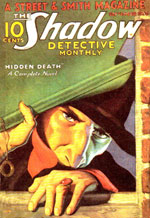 |
It is commonly believed that The Shadow originated on the radio, and led to the pulp magazine. According to Jim Steranko's History of Comics, Vol. 1, a seminal version of The Shadow was seen in Fame & Fortune, a pulp magazine Street & Smith acquired in 1929. Containing stories set against the backdrop of high finance and corporate drama, the February 1929 issue featured “The Shadow of Wall Street.” Written by George C. Jenks under the pseudonym of Frank S. Lawton, it told the tale of an elusive being with glittering eyes and a mocking laugh that crusaded against fraudulent investments and corrupt businessmen. The story was every bit as exciting as one would imagine, but readers seemed to love the character, and demanded more. However, the pulp folded later that year with the crash of the stock market.
Despite the character's similarities to the Master of Darkness, some experts believe this tenuous connection is the result of an attempt to drive up the value of an otherwise forgettable pulp magazine. Leading Shadow expert Anthony Tollin stated, "I have always believed that the claims that The Shadow first debuted in Street & Smith's Fame & Fortune (which are regularly perpetuated in the Overstreet Price Guide) were introduced by the American Comic Book Company as an excuse to sell that particular issue of Fame & Fortune at a price approaching that of The Shadow Magazine #1."
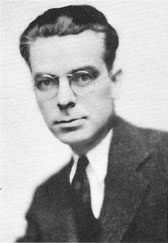 |
| Walter Gibson wrote 282 of the 325 Shadow stories published between 1931 and 1949. |
A Philadelphia journalist, 33-year old Walter Gibson, was hired to write four initial adventures, with the promise of more should it prove it successful. An amateur magician, he was the perfect choice to bring the proper amount of mystery and adventure to the title.
The Shadow magazine debuted in April 1931, eventually proving popular enough to warrant bimonthly publication beginning October, 1932. Gibson, under the pen-name Maxwell Grant, developed a backlog of stories which helped keep him ahead of his game, as well as allowing his editor to pick and choose such stories to suit the tastes of the readers. In all, Gibson wrote 282 of the 325 stories published between 1931 and 1949.
 |
Unlike The Shadow, The Spider’s adventures contained a greater element of sex. The Spider was aided in his battle against crime by his girlfriend Nita Van Sloan, while The Shadow’s “friend and companion” Margot Lane wasn’t featured in the pulps until December, 1942; a lukewarm relationship at best. The Spider was eventually canceled in December, 1943.
The Phantom Detective from Standard Publications was also a Shadow knockoff. He was Richard Curtis Van Loan, another playboy turned crime fighter. Predating Gotham City’s Bat-signal, he was called into action by a red beacon atop the city’s tallest skyscraper. His magazine ran from February 1933 until the summer of 1953, 170 appearances in all.
With the popularity of The Shadow, Street & Smith might have been expected to try to duplicate its success. But instead of generating another cheap imitation, Henry Ralston, the chief of circulation for Street & Smith, and editor John Nanovic chose to go in the completely opposite direction. Instead of a mysterious nighttime avenger, they chose instead to cultivate a hero who cooperated with authorities, a believable superman who was the epitome of human perfection in mind and body.
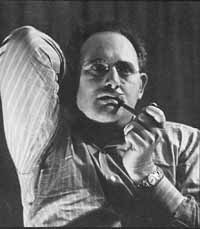 |
| Lester Dent of LaPlata, Mo, under the pen name Ken-neth Robeson, wrote most of the Doc Savage stories |
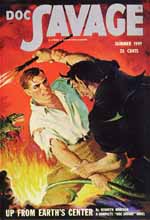 |
| The final issue of Doc Savage featured him in battle against a man who claimed to personify evil. |
In the years since, elements of the Doc Savage mythos have been found in a variety of modern-day literary descendants. Doc used a nerve pinch to render adversaries unconscious long before Mr. Spock ever employed such a tactic on Star Trek. Many of James Bond’s gadgets had their genesis in the stories of Lester Dent.
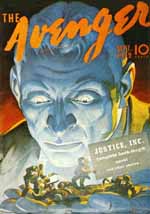 |
The Avenger ran monthly under his own title from September, 1939 to September, 1942. Five stories were published as a supporting feature in Clues-Detective, and a final story in The Shadow in 1944. These stories were written by Emile C. Tepperman, who had previously written adventures for The Spider.
Tepperman also contributed tales for Operator 5, published from April, 1934 to November, 1939. Mostly the creation of Frederick C. Davis writing as Curtis Steele, Jimmy Christopher, Secret Service Operator 5, defended America from all sorts of threats that plotted to conquer America. An ambitious plot line than ran from June, 1936 until July, 1937 chronicled Operator 5’s battle against the invasion of the Purple Empire.
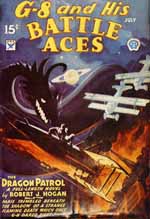 |
In the 1940s, pulp magazines began fighting a war on three fronts. Less expensive comic books had made inroads as the reading material of choice for younger readers. Wartime paper shortages forced less successful pulp magazines to cease publication. After the war, those one-time readers fortunate to return at war’s end, having faced down the Axis, were less interested in reading about the plots of imaginary villains.
Paperbacks soon became the preferred medium for many publishers. The format lent itself well to a revival of many pulp characters as a wave of nostalgia swept America in the mid-1960s. Pyramid, and later Jove, issued about 25 adventures of The Shadow. Approximately 30 stories of The Spider were republished, most by C&G (Carrol & Graf) or Berkley. When Warner Books reprinted the Avenger, the series proved popular enough to hire Ron Goulart to pen additional stories.
The most enduring of the pulp reprints was Doc Savage from Bantam Books. The Man of Bronze, under the deft brush of artist James Bama, was radically redesigned, becoming larger than life with a prominent widow’s peak and torn shirt motif.
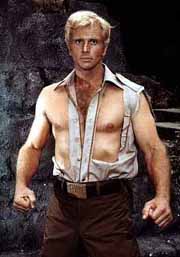 |
| Ron Ely starred as Doc Savage in the 1975 film. |
NEXT WEEK: Pulp characters make the jump to comics
Praise and adulation? Scorn and ridicule? Email me at philip@comicbookbin.com
Related Articles:
Pulp Culture, Part 4: From Pulps to Comics
Pulp Culture, Part 3: What's Black & Bronze and Read All Over?
Pulp Culture, Part 2: An Overview
Pulp Culture, Part 1: Copyright or Copy Wrong
